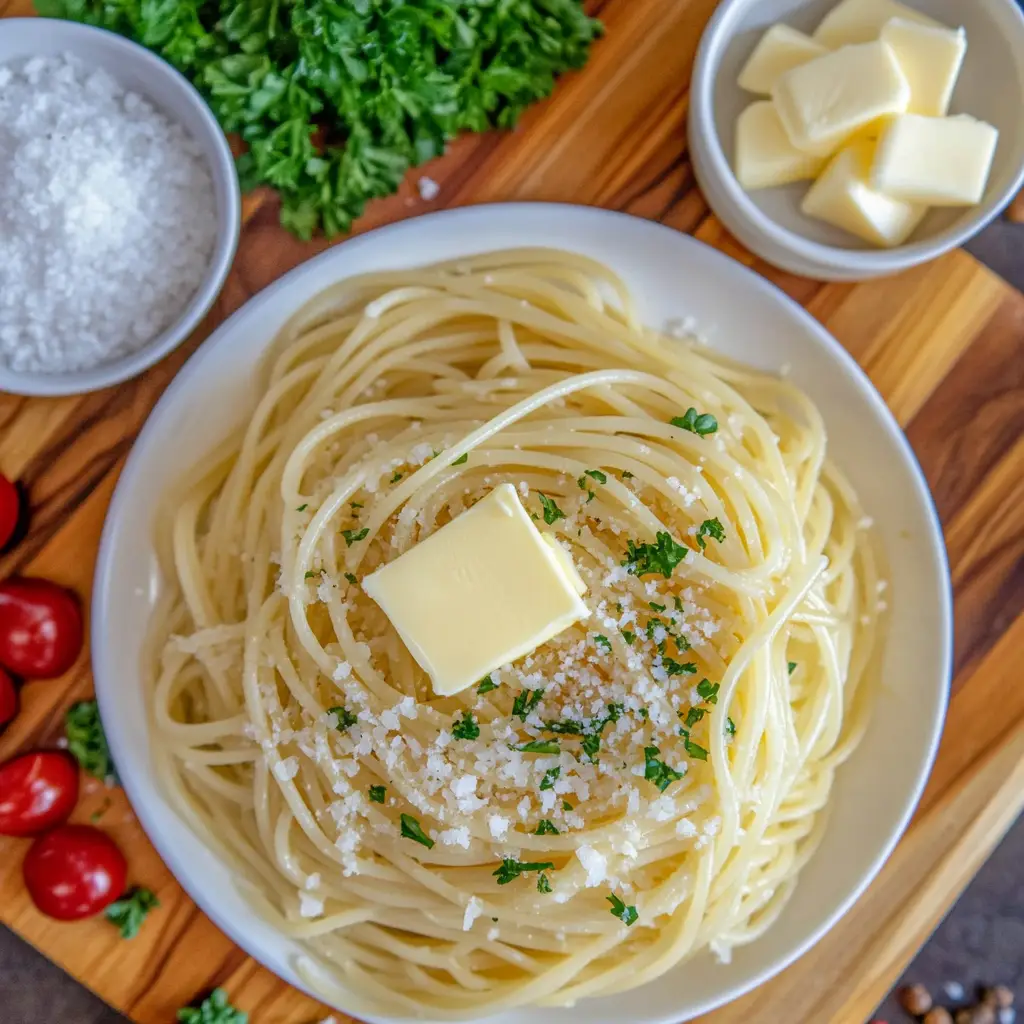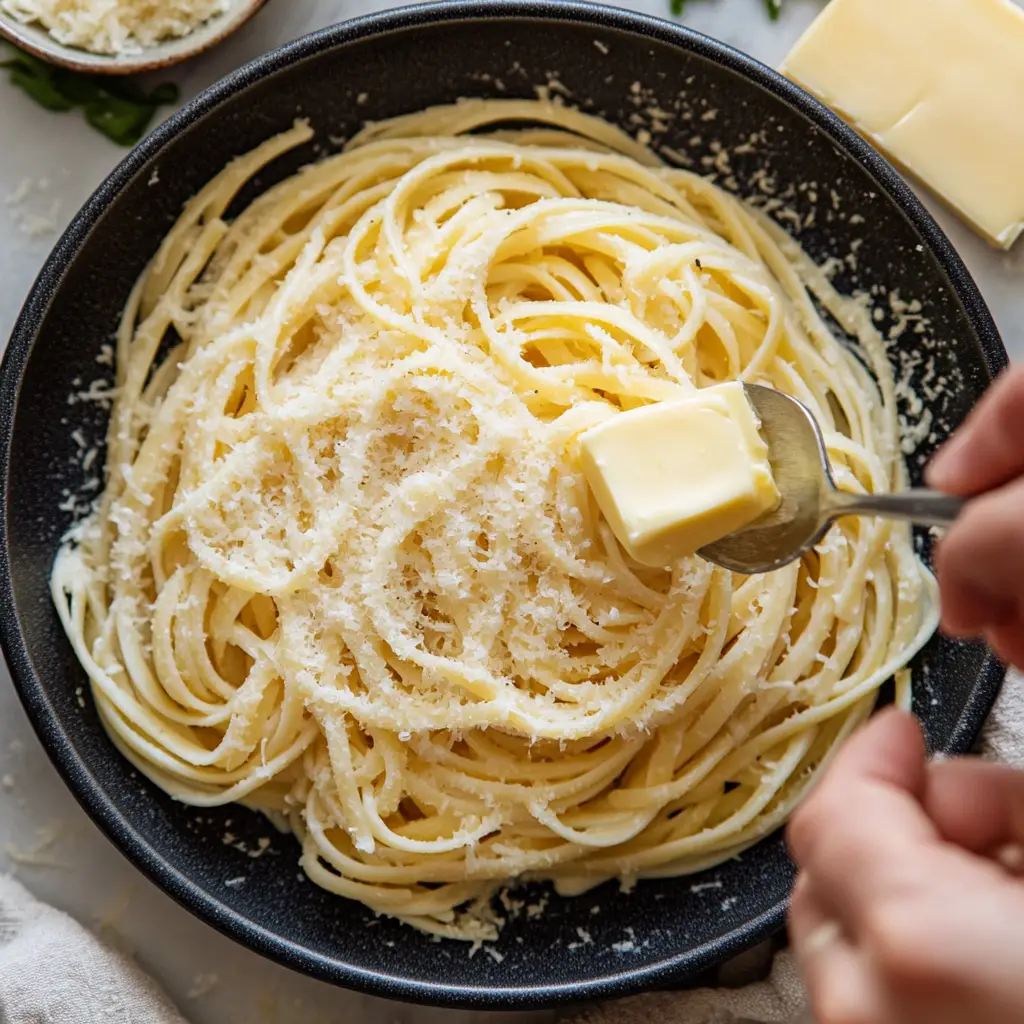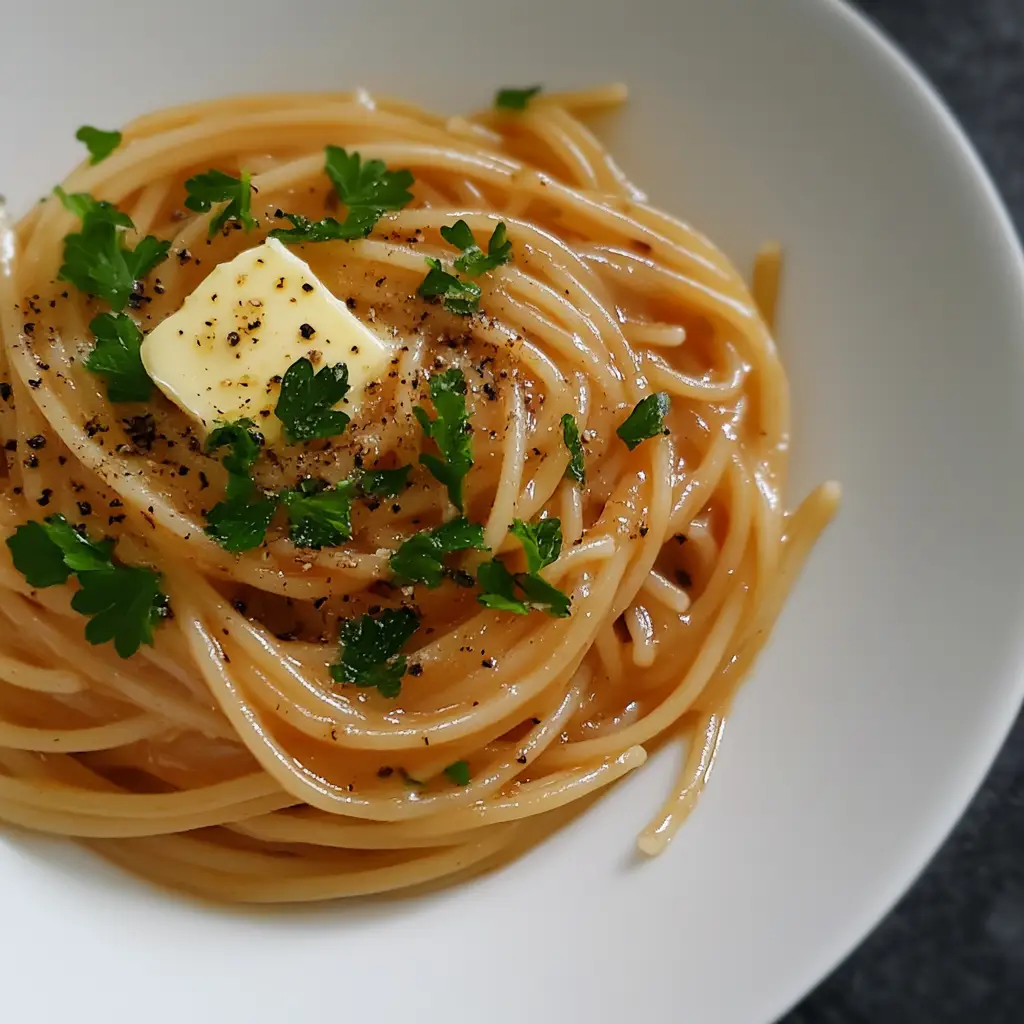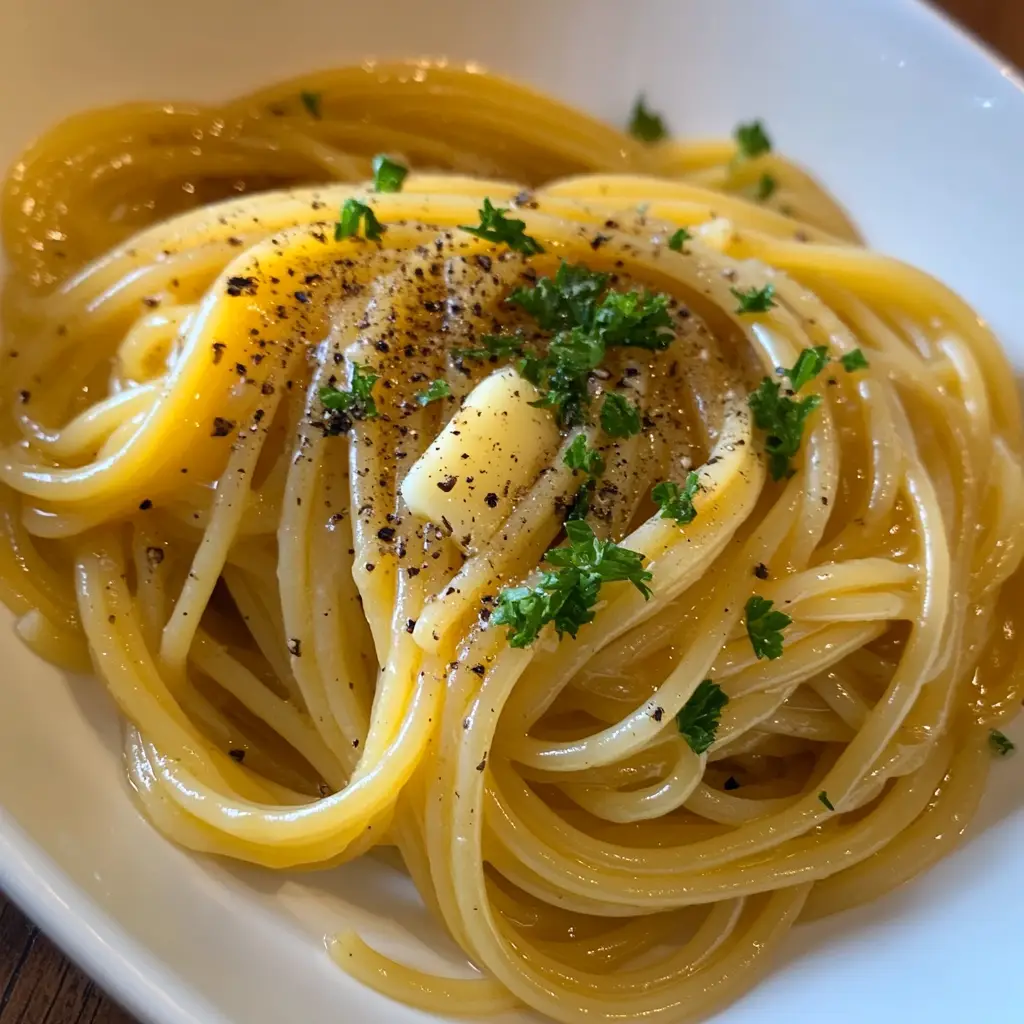Table of Contents
Introduction
Spaghetti with Butter and Parmesan is a simple, elegant dish that proves you don’t need a long ingredient list to create comfort on a plate. My Mother introduced me to this dish during a late-night study session in college—he called it “poor man’s pasta,” but I call it a timeless classic. Creamy, salty, and satisfying, it’s perfect for busy weeknights, minimalist meals, or when you just want something cozy and delicious in minutes.
Spaghetti with Butter and Parmesan is not just a dish; it’s an experience that transcends time and culinary boundaries. The beauty of this dish lies in its simplicity, making it accessible to novice cooks while still being a favorite among seasoned chefs. In this article, we will explore not just how to prepare this delightful pasta, but also why it remains a staple in households around the world.
Ingredients

- 12 oz spaghetti (or pasta of your choice)
- 4 tbsp unsalted butter
- 3/4 cup freshly grated Parmesan cheese (plus more for serving)
- Salt, to taste
- Freshly ground black pepper, to taste
- Reserved pasta water (about 1/2 cup)
- Optional: chopped parsley or lemon zest for garnish
Directions

Step 1: Cook the Spaghetti
- Bring a large pot of salted water to a boil.
- Cook spaghetti according to package directions until al dente.
- Before draining, reserve about 1/2 cup of pasta water.
Cooking spaghetti isn’t just about boiling water and throwing in the pasta; it’s an art that can greatly influence the final dish. For instance, the way you cook your pasta can affect its ability to hold sauce. Always remember to cook your pasta in a large pot of rapidly boiling salted water. This ensures that the pasta cooks evenly and remains al dente, which is crucial for the overall texture of the dish.
Step 2: Combine with Butter and Parmesan
- Return the drained pasta to the pot (off heat).
- Add butter and a splash of the reserved pasta water, tossing until butter is melted and coats the noodles.
- Sprinkle in the grated Parmesan while tossing, adding more pasta water as needed to create a creamy, silky sauce.
Additionally, consider experimenting with different types of pasta. While spaghetti is a classic choice, using a wider pasta like fettuccine can allow for more sauce to cling to each strand, enhancing every bite. You can also try whole grain or gluten-free pasta options if you prefer a healthier or gluten-free meal.
Step 3: Serve
- Season with salt and plenty of freshly cracked black pepper.
- Garnish with extra Parmesan, parsley, or lemon zest if desired.
- Serve immediately while hot and creamy.

When combining the pasta with butter and Parmesan, the magic truly happens. The key to a creamy sauce lies in the timing; add the butter when the pasta is still hot, allowing it to melt and coat the noodles perfectly. The reserved pasta water is also vital here, as it helps create a silky sauce that binds the cheese and butter together while ensuring that every strand of pasta is evenly coated.
Consider adding a pinch of nutmeg to your butter and Parmesan mixture for an unexpected depth of flavor. It’s a small addition that can make a significant difference, adding warmth and an aromatic quality that enhances the dish.
Tips & Tricks
- Use freshly grated Parmesan (not pre-shredded) for the smoothest, most flavorful sauce.
- Low-heat trick: Avoid returning the pot to direct heat after adding cheese to prevent clumping.
- Add-ins: Want a twist? Add sautéed garlic, chili flakes, or a fried egg on top.
- Make it a meal: Serve with roasted veggies or a side salad for balance.
For more similar recipes check the following 10 Dinners to Make for Your Picky Eater
FAQs About Spaghetti with Butter and Parmesan
What is the name of the pasta with butter and parmesan?
The dish is often called “Pasta al Burro e Parmigiano” in Italian, which simply means pasta with butter and Parmesan. In English, it’s commonly referred to as Spaghetti with Butter and Parmesan or sometimes affectionately called “Butter Noodles”, especially when served to kids.
What does adding butter to spaghetti do?
Adding butter to spaghetti adds richness, smoothness, and helps coat the pasta evenly. It also enhances the flavor of the dish and helps bind the sauce when combined with starchy pasta water and cheese, creating a creamy texture without needing heavy cream.
How to make pasta sauce with parmesan and butter?
To make a simple sauce with Parmesan and butter:
Cook pasta and reserve some of the starchy water.
Toss the hot pasta with melted butter, then sprinkle in grated Parmesan.
Add a splash of the reserved pasta water while tossing, allowing the cheese and butter to emulsify into a creamy, glossy sauce.
Season with salt and pepper and serve immediately.
Can I put parmesan cheese in my spaghetti?
Yes, absolutely! Parmesan cheese is a classic topping for spaghetti. It adds a savory, nutty flavor that complements both simple butter sauces and heartier tomato or meat sauces. For best results, use freshly grated Parmesan for better texture and taste.
Final Thought
Serving spaghetti with butter and Parmesan can be as creative as you like. While it shines on its own, consider pairing it with seasonal vegetables or proteins for a more balanced meal. Roasted cherry tomatoes or sautéed spinach make excellent companions, adding color and additional nutrients. For a heartier option, grilled chicken or shrimp can elevate your dish into a complete dining experience.
Don’t forget the power of presentation. A beautiful serving bowl, a sprinkle of fresh herbs, and an extra layer of grated Parmesan can make a simple dish feel gourmet. The key to a memorable dining experience often lies in the details.
In conclusion, spaghetti with butter and Parmesan is more than a simple recipe. It’s a celebration of flavors, a reminder of the joys of cooking and sharing meals with loved ones. Whether you stick to the classic recipe or choose to add your unique twist, this dish promises to bring warmth and comfort to your table.

